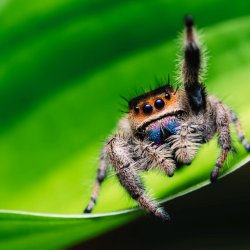Common Household Plants That Are Dangerous for Dogs
You might think that dogs will eat just about anything and they will if you let them. However, there are a number of plants that can actually lead to some serious health effects if consumed by your family pooch. The symptoms can range between moderate, like excessive drooling and lethargy, to serious, with severe gastrointestinal pain and even death. Veterinarians recommend that dog owners keep many of these plants out of reach of their pet or out of the house altogether. There might be a way to train them not to eat the houseplants, but it is better to be safe than sorry. Each year dogs make an estimated 10,000 visits to the animal emergency room after consuming poisonous plants. Here are some common household plants that are dangerous for dogs.
The number one most poisonous houseplant is cacti. If they can get through all the thorns, your dog can come down with some serious illnesses if she or he gets to the aloe part. Aloe, which can have amazing healing properties for humans, can actually be quite dangerous for your dog. It can result in gastrointestinal discomfort, changing of urine color, vomiting and diarrhea. In some severe cases it can cause anorexia and even manic depression in your dog if consumed in small doses over a long period of time.
Next, keep Fido away from philodendron. This plant you’ll usually find hanging from the ceiling near a window. It has long, tropical looking leaves and can add a great aesthetic touch to the house, but if you don’t want to find your pups in their dog beds all day, you should probably remove this plant from the home. It can actually cause severe burning of the lips, tongue and mouth area, which can be incredibly discomforting and can keep your dog from eating. Another symptom is lethargy and difficulty swallowing.
You should also keep your dog away from the hydrangea plant as well. This can cause gastrointestinal problems that can actually be quite severe if your dog eats the buds and ends of the leaves. If your dog happens to eat a hydrangea plant, don’t be surprised to see them exhibiting signs of depression and lethargy. They might also have excessive drooling, which can lead to other problems, like a messy carpet and dehydration.
Lastly, one of the most toxic plants to dogs is the azalea or rhododendron plant. While a few little bites might cause some diarrhea, vomiting, lethargy and even depression, if they eat a lot it can cause some severe problems. In some of the most severe azalea poisonings, dogs actually fell into comas, had heart attacks and even died. What is even more shocking is that it is hard to locate what exactly the toxic chemical is that is causing these reactions, which can make treatment even harder. In the meantime, veterinarians recommend that you keep most houseplants out of reach or don’t keep any in the home. It you think your dog has consumed any one of these houseplants, consult a veterinarian or take your dog to vet immediately.
More to Read:
Previous Posts:



